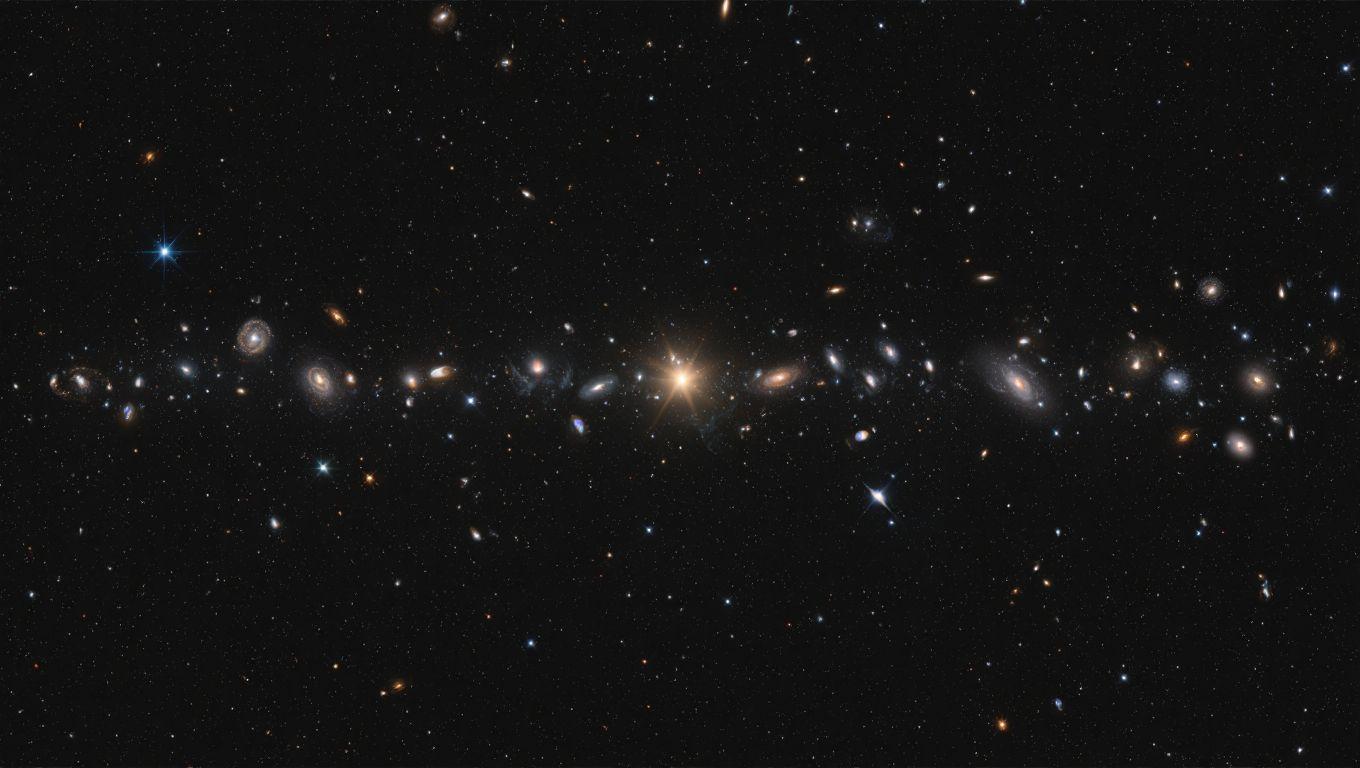Cosmic Great Wall Challenges Known Physics
A monumental discovery in the constellation Hercules-Corona Borealis is forcing scientists to rethink the fundamental principles of the universe. Astronomers have identified a colossal structure of galaxies, dubbed the Great Wall, that spans a staggering 10 billion light-years. This finding, brought to light by mapping the universe's most powerful explosions, directly challenges our long-held assumptions about cosmic structure.
How Gamma-Ray Bursts Uncover Cosmic Secrets
To see the invisible architecture of the universe, astronomers turn to gamma-ray bursts (GRBs), the most luminous and energetic explosions known. These cataclysmic events happen when a massive star collapses into a black hole or when two neutron stars merge. The resulting jets of particles, racing at nearly the speed of light, interact with their surroundings to produce gamma and X-rays that can be detected from billions of light-years away.
By charting the locations of these GRBs, scientists can effectively map the distribution of matter across vast distances. GRBs act as cosmic beacons, illuminating galaxies and galaxy clusters that are too faint or distant to be observed directly. This powerful technique is what allowed researchers to identify the immense scale of the Great Wall of Hercules-Corona Borealis.
A Structure So Large It Breaks the Rules
The Great Wall's sheer size presents a major problem for the cosmological principle, a cornerstone of modern cosmology. This principle states that on a large enough scale, the universe is essentially the same everywhere (homogeneous) and looks the same in every direction (isotropic). Based on the age of the universe, this principle implies a theoretical size limit for any cosmic structure, estimated to be around 1.2 billion light-years.
The Great Wall of Hercules-Corona Borealis, at approximately 10 billion light-years across, shatters this limit. Its existence suggests that matter is not as evenly distributed as our models predict. This discrepancy forces scientists to consider that our cosmological models might be incomplete. New theories, perhaps involving larger-than-expected fluctuations in the early universe, may be needed to explain how such a massive structure could have formed.

What Future Missions Will Reveal
To solve this cosmic puzzle, more data is needed. Upcoming projects like the European Space Agency's THESEUS mission are designed to do just that. With more advanced and sensitive instruments, THESEUS will be able to detect fainter and more distant gamma-ray bursts, allowing for an even more precise map of the universe's large-scale structure.
These future missions will be critical for determining the true extent of the Great Wall and searching for other similar mega-structures. The data gathered will help refine our models of the universe's formation and evolution, potentially uncovering new physical laws.
Redrawing Our Map of the Universe
The study of the Great Wall of Hercules-Corona Borealis, detailed in a paper accessible on arXiv, has significant implications for the scientific community. It reinforces the value of GRBs as a tool for probing the farthest reaches of the cosmos and challenges researchers to reconsider established theories. While this discovery is a hurdle for current models, it also provides a thrilling new direction for research.
This exploration into the universe's largest known structures highlights the dynamic nature of science. As we stand on the brink of new discoveries, we are reminded of how many secrets the cosmos still holds.


